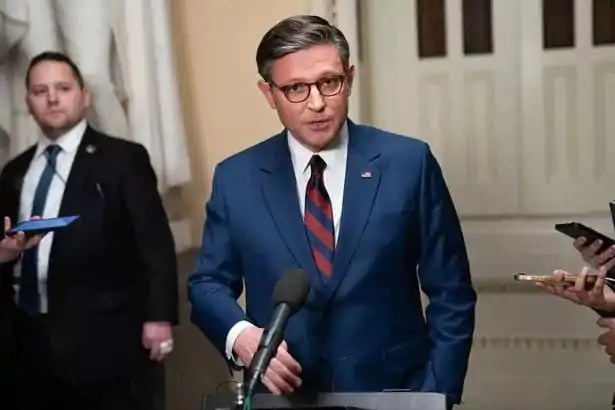Former President Donald Trump has made headlines once again with a strong appeal for an immediate government shutdown, following the rejection of a Republican-backed spending bill by Congress. Calling the proposal’s dismissal “laughable,” Trump aired his grievances through a post on Truth Social, where he sharply criticized current leadership under President Joe Biden. His statement has since triggered widespread reaction across political circles and media platforms alike, once again placing him at the center of a national debate.
A Stark Warning Against Compromise

Trump’s remarks suggest he sees a government shutdown not as a failure but as a necessary step, given what he deems as unworkable leadership and mismanagement. “If there is supposed to be one, let it happen one!” he declared, signaling an unwillingness to support further negotiations that aim to avoid such an outcome. As someone closely observing this political divide, I view this stance as a bold—and potentially polarizing—strategy. Rather than pushing for resolution, Trump appears to be leaning into confrontation, which could have deep implications for both parties as the budget deadline approaches.
Political Divide Intensifies in Washington
At the heart of the matter lies a deepening rift between Republicans and Democrats. The proposed spending bill, championed by GOP members, failed to gain traction, revealing the gridlock within Congress. Trump, never one to shy away from direct commentary, dismissed bipartisan negotiations as weak and ineffective. In his view, the Republican Party must present a unified front and back more aggressive fiscal measures. Personally, I find this approach reflective of Trump’s broader political playbook—escalating tensions to prompt sharper party alignment.
Rallying the Republican Base

Beyond his criticism of the administration, Trump used his platform to call on Republican lawmakers to take decisive action. He encouraged them to support stronger terms in future proposals and to stand firm against what he sees as Democratic overspending. This message seems designed not just to influence the immediate debate, but to further consolidate his influence within the GOP. As we’ve seen in the past, Trump’s public interventions often reshape intra-party dynamics, and this latest statement is no exception.
Political Stakes Rise as Deadlines Near

With a potential shutdown looming and no clear resolution in sight, the issue has rapidly become a focal point in Washington. Lawmakers now face increasing pressure from their respective parties—and constituents—to resolve the standoff before it affects federal operations and services. Whether Trump’s dramatic intervention will push negotiations forward or deepen the impasse remains uncertain. One thing is clear: this situation reflects a broader, ongoing struggle over control, priorities, and the future direction of American governance. As this debate continues to unfold, public engagement and scrutiny will be vital in holding all sides accountable.


